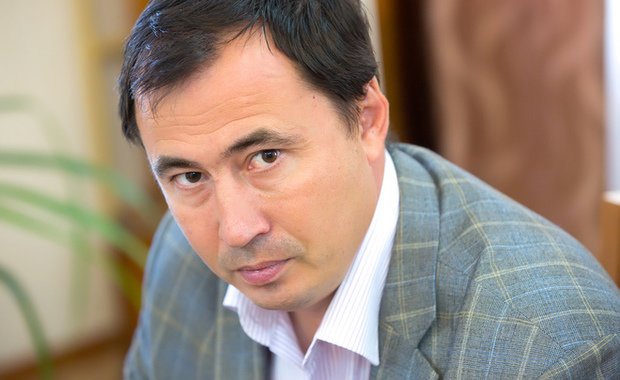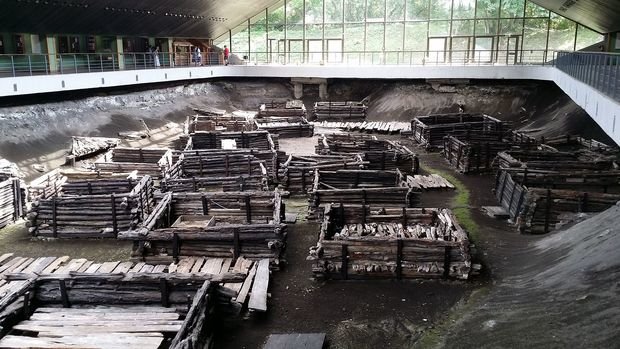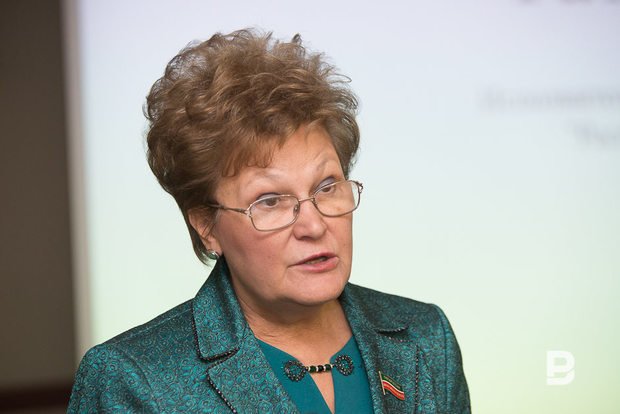Our response to the Swedes: Tatarstan to outshine famous Vasa Museum
An ancient city in Sviyazhsk was dug, conserved and created the only wood archaeology museum
Tatar Settlement Museum of Wood Archaeology will open in Sviyazhsk on 5 September – it's a street with 400-year-old buildings found during digs that were conserved later. Thanks to the high humidity of the soil, houses, fences, household items and ancient Sviyazhsk residents' personal belongings have survived in a good state. The museum will open during the UNESCO Forum on Intercultural Dialogue, which will be in Kazan.
Water is life: how ancient Sviyazhsk survived
The museum has being created since 2010 when archaeologists who worked in Sviyazhsk came across an ancient street. It survived because it was ''buried'' in a humid archaeological cultural layer or, to put it simply, in the soil rich in water. Usual fragile organic materials that decay as time goes by – wood, leather, wool, cloth – have survived and are in a good state today.
''The cultural layer in Sviyazhsk occupies a territory of 5 ha, the depth is 3,5 metres, it contains several construction layers. By the beginning of the work, the bank had been destroyed, then people started to strengthen it and gave a task to turn the site into a museum. A 2,000 square-metre dig was in the most destructed part of the bank, and about a territory of 900 square metres was chosen. It became the main exhibit of the exposition that tells about the urban development of Sviyazhsk,'' tells Ayrat Sitdikov, director of the Institute of Archaeology of the Tatarstan Academy of Sciences.
Over 140,000 items dated back to the 16-18 th centuries were found during digs. The museum itself consists of 4,000 items linked with elements of architectural sites and four layers. 3-4 mansions with fences, household buildings, chimneys were recreated in each of the layers, the youngest of which goes back to the 1550s.

Berestye and Vasa
According to Ayrat Sitdikov, no Russian city survived in the humid layer has become the foundation of a museum yet. There is a similar museum in Belarus – Berestye. But it has only one layer dated back to the 11 th century, the upper layers were dismantled. From a perspective of importance, he compares the museum in Sviyazhsk with the famous Vasa Museum in Stockholm. It was built around a ship that sank in the 17th century and that was raised in the middle of the 20th century. Now it's the most popular museum in Sweden.
''A conservation technology for huge archaeological items has been used in Russia for the first time. Items 6-8 metres in height weren't conserved previously. Technologies allowing to conserve organic materials have been applied for the first time.''
Wooden architecture, which is the foundation of the urban culture of Russia, is present almost nowhere. Our regions' originality from the early Middle Ages was linked with wood. We didn't have a lot of stone buildings – this material wasn't convenient for our region. We had wood, it absorbs more heat. But this part of our material culture wasn't represented earlier. In this museum, we will be able to see the bright, little-known history of urban architecture of our country, which is little-known not only for us but also for the whole world.
Restorers' research showed that the found trees were cut according to the technologies that aren't characteristic of Central Russia. Their own wood processing is a merger of cultural traditions, which were reflected in architecture. This museum illustrates bright culture, its diversity, what Tatarstan and Russia are rich in,'' says Sitdikov.

''Tatarstan is one of the leading platforms for intercultural dialogue and conservation of historical heritage''
The museum will open on 5 September during the UNESCO Forum on Intercultural Dialogue, which will be in Kazan from 4 to 7 September. 189 people including 64 foreign representatives confirmed their participation. Deputy UNESCO Director General Sin Qu, Director of the State Hermitage Mikhail Piotrovsky, ex-UNESCO Director General Irina Bokova, Special Envoys for Cultural Diplomacy Hedva Ser and Judith Pisar and others are among them.
''Only 12 people in total have the title of a special envoy. Mintimer Shaimiev who got it for a targeted, fruitful, lasting work is one of them. Tatarstan is one of the leading platforms for intercultural dialogue and conservation of historical heritage. Russia has 29 sites on the UNESCO World Heritage Site List, 3 sites of them are in Tatarstan,'' claimed Tatiana Larionova, deputy chairperson of the Tatarstan State Council, executive director of Renascence regional fund.

The book From Heart to Heart with quotations from Shaimiev's speech about problems of conserving cultural heritage will be presented at the forum.
''It was initiated by our colleagues from UNESCO. It means how authoritative Mr Shaimiev is,'' Larionova paid her attention.
Tatarstan has other sites that deserve to be on the UNESCO World Heritage Site List. The Bilyar Town is called one of them. But it's not planned to include it in, this issue isn't going to be discussed at the forum.